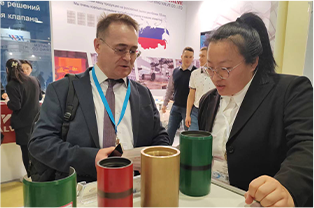- Afrikaans
- Albanian
- Amharic
- Arabic
- Armenian
- Azerbaijani
- Basque
- Belarusian
- Bengali
- Bosnian
- Bulgarian
- Catalan
- Cebuano
- Corsican
- Croatian
- Czech
- Danish
- Dutch
- English
- Esperanto
- Estonian
- Finnish
- French
- Frisian
- Galician
- Georgian
- German
- Greek
- Gujarati
- Haitian Creole
- hausa
- hawaiian
- Hebrew
- Hindi
- Miao
- Hungarian
- Icelandic
- igbo
- Indonesian
- irish
- Italian
- Japanese
- Javanese
- Kannada
- kazakh
- Khmer
- Rwandese
- Korean
- Kurdish
- Kyrgyz
- Lao
- Latin
- Latvian
- Lithuanian
- Luxembourgish
- Macedonian
- Malgashi
- Malay
- Malayalam
- Maltese
- Maori
- Marathi
- Mongolian
- Myanmar
- Nepali
- Norwegian
- Norwegian
- Occitan
- Pashto
- Persian
- Polish
- Portuguese
- Punjabi
- Romanian
- Russian
- Samoan
- Scottish Gaelic
- Serbian
- Sesotho
- Shona
- Sindhi
- Sinhala
- Slovak
- Slovenian
- Somali
- Spanish
- Sundanese
- Swahili
- Swedish
- Tagalog
- Tajik
- Tamil
- Tatar
- Telugu
- Thai
- Turkish
- Turkmen
- Ukrainian
- Urdu
- Uighur
- Uzbek
- Vietnamese
- Welsh
- Bantu
- Yiddish
- Yoruba
- Zulu
API casing sizes အကြောင်း များသောကြာမြင့်သည့် ခေါင်းစဥ် 15 စကားလုံးအတွင်း
API Casing Sizes Myanmar’s Guide to Understanding API Casing Standards
API (American Petroleum Institute) casing sizes play a crucial role in the oil and gas industry, ensuring that drilling operations can be executed safely and effectively. In Myanmar, with its growing energy sector, understanding these specifications is essential for professionals involved in exploration and production. This article aims to provide an overview of API casing sizes and their importance in Myanmar's petroleum industry.
API Casing Overview
Casing is a series of tubing that is inserted into a drilled well to support the wellbore and isolate different layers of rock and fluids. API casing sizes are standardized measurements established by the American Petroleum Institute, which provide specifications for the dimensions, strength, and performance of the casing used in drilling operations.
The main types of casing include
1. Conductor Casing The first casing that is installed in the well. It prevents the collapse of the uppermost layers of the well and protects against contamination.
2. Surface Casing The second casing that provides additional support and isolates groundwater from the drilling activities.
3. Intermediate Casing Installed after drilling through problematic zones, it provides stability and isolation for deeper formations.
4. Production Casing This is the final casing that is installed to allow for the production of oil and gas. It is designed to handle high pressures and protect the well from potential damages.
API Casing Sizes
API casing sizes are categorized primarily by their outside diameter (OD) and wall thickness. The standard sizes range from 4.5 inches to 20 inches in diameter, with several wall thickness options available. This variability allows for optimal selection based on the specific geological conditions and pressure requirements in different drilling situations.
api casing sizes

Common API Casing Sizes
- 4.5 inches Commonly used for production or small diameter wells. - 7 inches Often used in higher pressure formations or for deeper wells. - 9.625 inches A standard size that finds widespread use in various applications. - 13.375 inches This is a larger casing size used for significant support and structural integrity. - 20 inches Typically found in conductor casing applications for offshore drilling.
Importance of API Casing Sizes in Myanmar
As Myanmar continues to develop its natural resources, particularly in oil and gas, understanding API casing sizes is imperative. The right casing ensures
1. Safety Proper casing prevents potential blowouts and controls pressure, safeguarding the lives of workers and the environment.
2. Efficiency Selecting the correct casing size can enhance drilling operations, reducing time and costs.
3. Regulatory Compliance Adhering to API standards helps companies comply with local and international regulations, which is vital for a country looking to attract foreign investment in its energy sector.
4. Environmental Protection Properly installed casing systems minimize the risk of pollution from oil and gas operations, thereby protecting Myanmar’s rich biodiversity.
Conclusion
Understanding API casing sizes is integral for professionals in Myanmar's oil and gas industry. With the rapid development of the sector, there is a growing need for knowledge about best practices in drilling operations. By adhering to API standards, companies can not only enhance safety and efficiency but also contribute to sustainable resource management. As Myanmar moves forward, embracing these standards will be vital in ensuring a balanced approach to harnessing its natural resources while protecting the environment.
In summary, API casing sizes form the backbone of safe and efficient oil and gas operations. By investing in education and adherence to these industry standards, Myanmar can look towards a brighter and more sustainable energy future.
-
Tubing Pup Joints: Essential Components for Oil and Gas OperationsNewsJul.10,2025
-
Pup Joints: Essential Components for Reliable Drilling OperationsNewsJul.10,2025
-
Pipe Couplings: Connecting Your World EfficientlyNewsJul.10,2025
-
Mastering Oilfield Operations with Quality Tubing and CasingNewsJul.10,2025
-
High-Quality Casing Couplings for Every NeedNewsJul.10,2025
-
Boost Your Drilling Efficiency with Premium Crossover Tools & Seating NipplesNewsJul.10,2025







